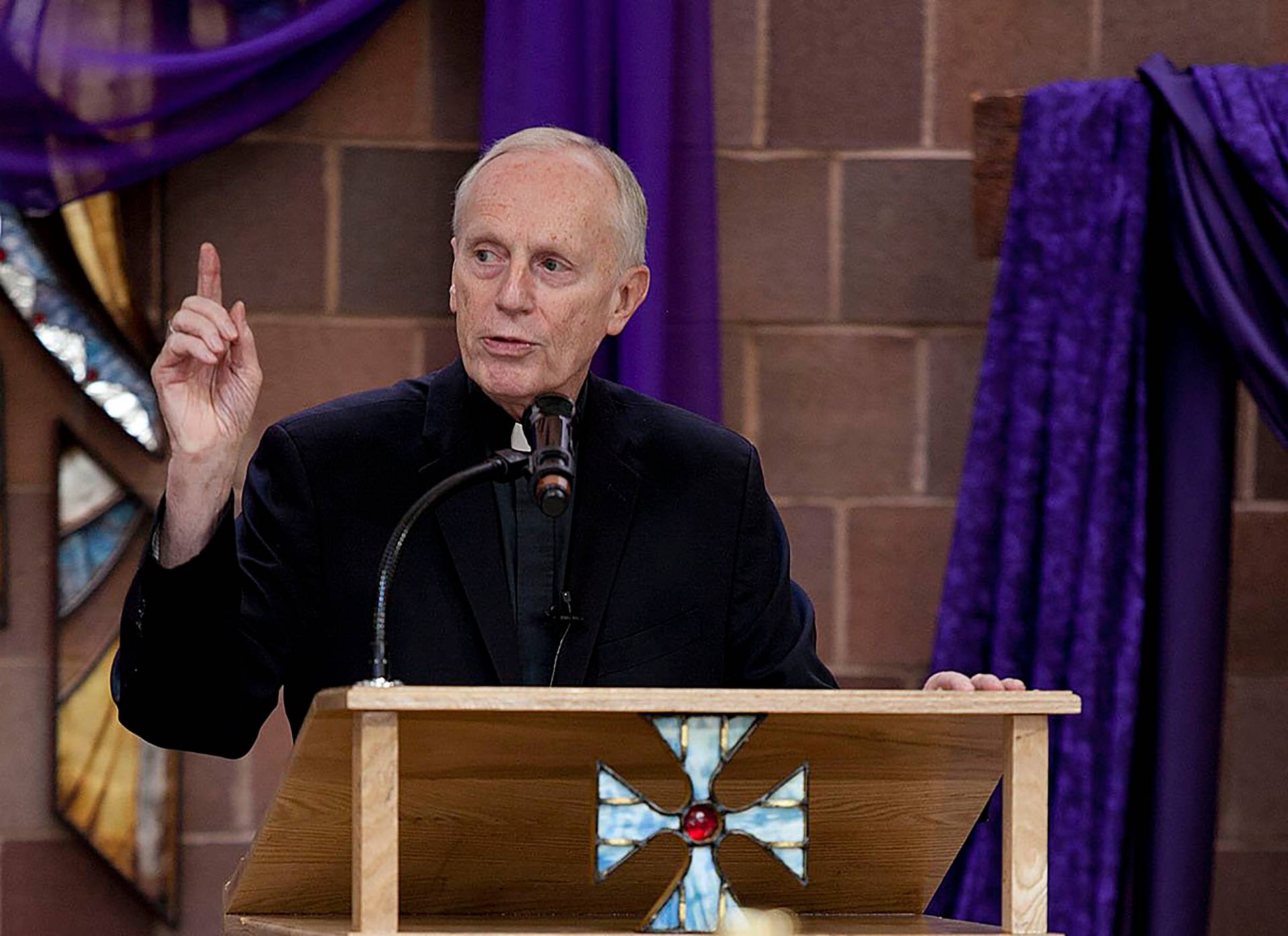When Capuchin Father Thomas Weinandy announced yesterday he had penned a letter to Pope Francis accusing the pontiff of fostering “chronic confusion” and “demeaning” the importance of doctrine, it was the biggest move from Francis critics since September, when a group of conservative theologians made known they had sent a “filial correction” to the pope.
The former doctrine chief to the US bishops, who resigned as a consultant to the bishops’ Committee on Doctrine after his letter came out, told Francis that in his document on the family, Amoris Laetitia, “your guidance at times seems intentionally ambiguous, thus inviting both a traditional interpretation of Catholic teaching on marriage and divorce as well as one that might imply a change in that teaching.”
Weinandy, who’s also a current member of the Vatican’s International Theological Commission, said Francis was causing faithful Catholics to “lose confidence in their supreme shepherd.”
RELATED: Ex-bishops’ doctrine chief says darkness coming to light under Francis
Yet when asked by Crux about the filial correction, he said it wasn’t “theologically helpful,” adding he didn’t think it was presented in an “effective manner.”
The filial correction accused Francis of promoting heresy by propagating seven heretical positions concerning marriage, moral life and the sacraments with his 2016 document Amoris Laetitia and subsequent “acts, words and omissions.”
Most of the complaints surround the possibility of the divorced-and-remarried receiving Communion at Mass.
The 25-page letter, signed by 62 theologians and clergy, arrived with a huge splash on September 23, and was featured in newspapers and on television around the world, both in the mainstream media and Catholic press. It continues to be a point of reference on many conservative Catholic websites.
Yet Weinandy is not the only Francis critic to distance himself from the document. Professors Josef Seifert and Luke Gormally, two academics removed from the Pontifical Academy for Life by Francis and vocal critics of Amoris Laetitia, have also not signed. (Seifert even once said Amoris contained “objectively heretical statements.”)
In fact, in the six weeks since publication of the filial correction, the number of signatories now stands at 250, which means only 188 more people chose to sign it after it became public.
RELATED: Retired Texas bishop signs “filial correction” of Pope Francis
And it’s not hard to add yourself to the document: Just click on the link, and leave your name, academic qualification, and e-mail.
Furthermore, many of the new signatories are not professional theologians. Several of the clergy are only listed as parish priests, and a large number of the laypeople hold degrees in non-ecclesiastical subjects, such as law and art.
When released, the filial correction was presented as the beginning of a new level of resistance against attempts to change the discipline on communion for the divorced-and-remarried and other “innovations” introduced during Francis’s reign. In a statement, the organizers called it “an epoch-making act,” and claimed the last time such a thing happened was in 1333.
So why after such a spectacular introduction, has the filial correction become such a damp squib? Here a few possible explanations.
First of all, the language in the correction is unusally strong. Although it makes good newspaper copy, directly accusing a pope of promoting heresy is going to make even Francis’s stronger critics hesitant. Even the separate “fraternal correction” proposed by American Cardinal Raymond Burke only seeks “clarification” and would ask Francis to reaffirm Church teaching. He hasn’t suggested directly accusing the pope of heresy.
RELATED: Burke again says Pope must answer ‘Amoris’ questions
Secondly, the document comes from the most traditionalist faction of the Church. The organizers of the correction are affiliated with the traditional Latin Mass movement, including the spokesman, British academic Joseph Shaw, who is the president of the UK’s Latin Mass Society.
Two of the signatories are leaders of the traditionalist Society of St. Pius X, which is not even in full communion with the Church: Bishop Bernard Fellay, the SSPX superior general, and Father Robert Brucciani, the district superior of the SSPX in Great Britain.
Although many in the media tend to conflate different conservative factions within the Church into an undistinguished monolith, the fact is most conservative critics of Amoris Laetitia don’t want to be associated with what is often viewed as a traditionalist fringe. Seeing Fellay and Brucciani’s names on the document would have created a red line many right-leaning Catholics would not have crossed.
Reinforcing this point is the document’s long digression on why Modernism – which was condemned by Pope Pius X in 1907 – and the influence of Martin Luther were at the heart of the problem.
RELATED: Pope’s deputy urges dialogue after Francis accused of heresy
Undoubtedly, the authors thought this was important, but just as assuredly many theologians would have seen this as a rehashing of the debates surrounding the Second Vatican Council, and also as a subtle attack on the pope’s immediate predecessors – John Paul II and Benedict XVI – who were also accused by traditionalists of the same thing.
The organizers probably would have been more effective if they softened their language, narrowed their criticism, and made a stronger effort to gather supporters from a more varied background.
Instead of presenting a unified front to the pope, the filial correction has highlighted the differences among conservatives in the Church under Francis.
Not just between the Weinandys and the Shaws, but also the numerous conservative Catholics who are confident Amoris Laetitia should be read in a way that doesn’t change the Church’s practice on sexual ethics and position on communion for the divorce-and-remarried.
For example, on September 25, Canadian Cardinal Marc Ouellet – the head of the Vatican’s Congregation for Bishops, and who few would consider a liberal – warned against “any alarmist interpretation” that says the document is “a break with tradition,” or a “permissive interpretation that celebrates access to the sacraments” for the divorced and remarried is “unfaithful to the text and to the intentions of the supreme pontiff.”
Which might be an indication of another reason the filial correction failed to gain traction: Perhaps many on the Catholic right are perfectly happy to embrace the pope’s “intentional ambiguity,” rather than put up a fight they don’t think they’ll win.
















